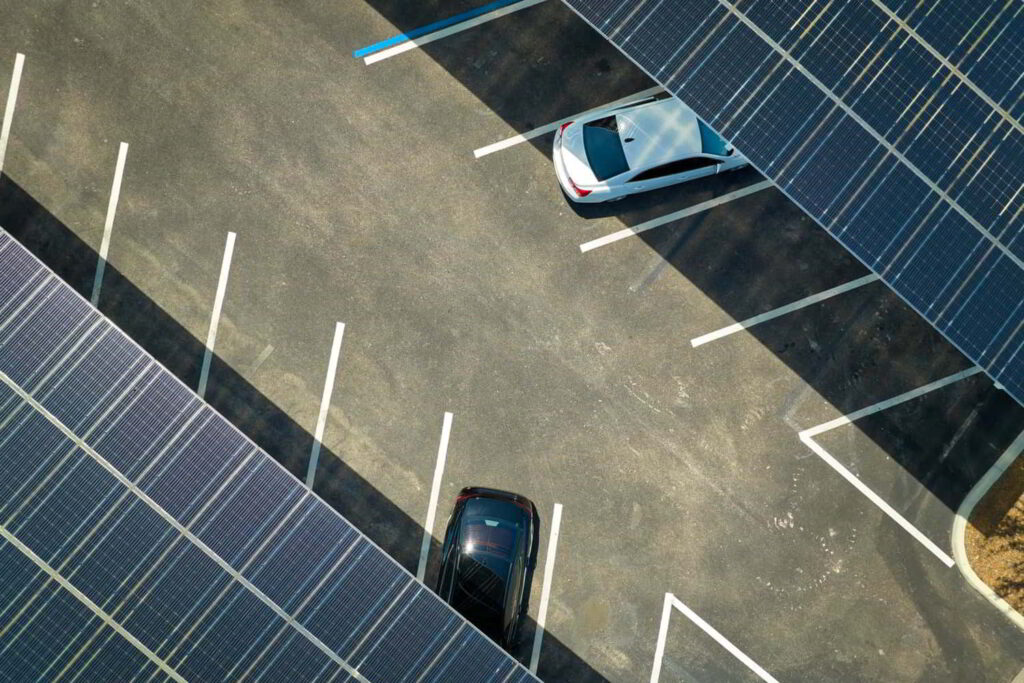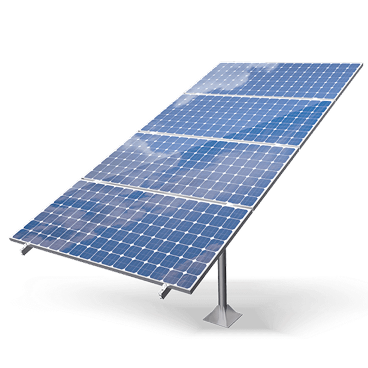Solar On Car Parking
- Jaimax Sunbim Private Limited
- Solar On Car Parking
Solar On Car Parking
Solar car parking, also called a solar carport, is a special type of parking area that has a roof made of solar panels. These panels use sunlight to produce electricity. It gives shade and protection to cars while also making clean, free energy from the sun. This is a smart way to use parking spaces, especially in places like offices, malls, hospitals, schools, and factories. Solar carports can also be used to charge electric vehicles (EVs) using solar power. They help save money on electricity bills, reduce pollution, and improve your business image by showing you care about the environment.
Save Money, Go Solar – Power Your Parking with Clean Energy!

Benefits
- Make Free Electricity from the Sun
- Protects Your Vehicles
- Charge Electric Vehicles (EVs)
- Saves Money in the Long Run
- Eco-Friendly Solution
- Makes Use of Unused Space
- Low Maintenance
- Increases Property Value
- Shows You Care About the Environment
- Works as a Backup in Power Cuts
Advantage of Our Company
Government Subsidies Assistance
Expert Installation Services
Financing Options
Real-Time Monitoring Systems
Residential Project Work
200 Kw
Natural Green
Wood Industries
City : Surat
100 Kw
Safal Industries
City : Gandhinagar
50 Kw
Best Packaging
City : Chhatral
200 Kw
Natural Green
Wood Industries
City : Surat
Frequently Asked Questions
What is a solar carport?
A solar carport is a covered parking structure with solar panels mounted on top. It provides shade and protection for vehicles while generating clean electricity from sunlight. It’s a smart way to turn your parking space into a power-generating area.
How does a solar carport work?
Just like rooftop solar panels, solar carports use solar panels to absorb sunlight and turn it into electricity. This energy can be used to power your home, office, EV charging stations, or appliances, helping you reduce your electricity bills.
What are the benefits of installing a solar carport?
Saves money on electricity
Protects vehicles from heat, rain, and dust
Generates free, green energy
Can be connected to EV charging stations
Increases property value
Qualifies for government subsidies and tax benefits
Great for residential buildings, commercial areas, schools, hospitals, and more
Is a solar carport better than rooftop solar?
Both systems have their benefits. A solar carport doesn’t need a strong roof and is easy to access and maintain. It also protects vehicles while generating power. If you don’t have space on your roof or want dual use of your land, a solar carport is a great choice.
Can I charge my electric vehicle (EV) using a solar carport?
Yes! You can install an EV charging point under your solar carport. This allows you to charge your car using solar energy, reducing your fuel costs and making your transport more eco-friendly.
How much space is needed for a solar carport?
You usually need the same space as a regular parking spot. A single carport typically requires about 12–16 square meters (130–170 sq. ft). Carports can be built for one car or for many vehicles, depending on your needs.
Is a solar carport weather-resistant?
Yes, solar carports are made from strong, rust-proof steel or aluminum frames. The panels and structure are designed to withstand rain, wind, and heat, and can last 25–30 years with minimal maintenance.
What maintenance does a solar carport require?
Maintenance is very low. You only need to:
Clean the panels 3–4 times a year
Inspect the wiring and structure once a year
Monitor performance through a solar monitoring app or system
Are there any government schemes or subsidies for solar carports?
In many regions (such as India, the US, and the EU), governments offer subsidies, tax benefits, and accelerated depreciation for solar installations—including carports. These incentives can reduce your initial cost by 20–70%, depending on your location and project size.
How long does it take to install a solar carport?
nstallation usually takes about 1–3 weeks, depending on the number of carport units and approval processes (like net metering or subsidy paperwork).




